
分子振动:代数与非线方法(英文版)
全新正版 现货速发
¥ 62.5 6.4折 ¥ 98 全新
库存4件
作者吴国祯[著]
出版社科学出版社
ISBN9787030599094
出版时间2018-01
装帧其他
开本16开
定价98元
货号1201827216
上书时间2024-12-11
- 在售商品 暂无
- 平均发货时间 9小时
- 好评率 暂无
- 最新上架
商品详情
- 品相描述:全新
- 商品描述
-
目录
Preface
1 Pendulum Dynamics
1.1 Pendulum dynamics
1.2 Morse oscillator
1.3 Hamiltons equations of motion
1.4 Pendulum dynamics as the basic unit for resonance
1.5 Standard map and KAM theorem
1.6 Conclusion
References
2 Algebraic Approach to Vibrational Dynamics
2.1 The algebraic Hamiltonian
2.2 Heisenbergs correspondence and coset representation
2.3 An example: The H20 case
2.4 su(2) dynamical properties
Reference
Appendix: The derivation of raising and lowering operators
3 Chaos
3.1 Definition and Lyapunov exponent: Tent map
3.2 Lyapunov exponent in Hamiltonian system
3.3 Period 3 route to chaos
3.4 Resonance overlapping and sine circle mapping
3.5 The case study of DCN
3.5.1 The chaotic motion
3.5.2 Periodic trajectories
3.5.3 Chaotic motion originating from the D-C stretching
References
Appendix: Calculation of the maximal Lyapunov exponent
4 C-H Bending Motion of Acetylene
4.1 Introduction
4.2 Empirical C-H bending Hamiltonian
4.3 Second quantization representation of Heft
4.4 su(2) ○ su(2) represented C-H bending motion
4.5 Coset representation
4.6 Modes of C-H bending motion
4.7 Reduced Hamiltonian of C-H bending motion
4.8 su(2) origin of precessional mode
4.9 Nonergodicity of C-H bending motion
4.10 Intramolecular vibrational relaxation
References
5 Assignments and Classification of Vibrational Manifolds
5.1 Formaldehyde case
5.2 Diabatic correlation, formal quantum number and level reconstruction
5.3 Acetylene case
5.4 Background of diabatic correlation
5.5 Approximately conserved quantum number
5.6 DCN case
5.7 Density p in the coset space
5.8 Lyapunov exponent analysis
References
6 Dixon Dip
6.1 Significance of level spacings
6.2 Dixon dip
6.3 Dixon dips in the systems of Henon-Heiles and quartic potentials
6.4 Destruction of Dixon dip under multiple resonances
6.5 Dixon dip and chaos
References
7 QuantiT.ation by Lyapunov Exponent and Periodic Trajectories
7.1 Introduction
7.2 Hamiltonian for one electron in multiple sites
7.3 Quantization: The least averaged Lyapunov exponent
7.4 Quantization of H20 vibration
7.5 Action integrals of periodic trajectories: The DCN case
7.6 Retrieval of low quantal levels of DCN
7.7 Quantization of Henon-Heiles system
7.8 Quantal correspondence in the classical AKP system
7.9 A comment
References
8 Dynamics of DCO/HCO and Dynamical Barrier Due to Extremely Irrational Couplings
8.1 The coset Hamiltonian of DCO
8.2 State dynamics of DCO
8.3 Contrast of the dynamical potentials of D-C and C-O stretchings
8.4 The HCO case
8.5 Comparison of the dynamical potentials
8.6 A comment: The IVR role of bending motion
8.7 Dynamical barrier due to extremely irrational couplings: The role of bending motion
References
9 Dynamical Potential Analysis for HCP, DCP, N20, HOC1 and HOBr
9.1 Introduction
9.2 The coset represented Hamiltonian of HCP
9.3 Dynamical potentials and state properties inferred by action population
9.4 State classification and quantal environments
9.5 Localized bending mode
9.6 The condition for localized mode
9.7 On the HPC formation
9.8 The fixed point structure
9.9 DCP Hamiltonian
9.10 Dynamical similarity between DCP and HCP
9.11 N20 dynamics
9.12 The cases of HOC1 and HOBr
9.13 A comment
References
Appendix
10 Chaos in the Transition State Induced by the Bending Motion
10.1 Chaos in the transition state
10.2 The cases of HCN, HNC and the transition state
10.3 Lyapunov exponent analysis
10.4 Statistical analysis of the level spacing distribution
10.5 Dixon dip analysis
10.6 Coupling of pendulum and harmonic oscillator
10.7 A comment
References
Appendix: Authors Publications Related to this Monograph
内容摘要
分子高振动态的混沌现象十几年来一直是分子物理领域的一个重要课题,其研究结果对认识非线性耦合振子体系的行为有普遍意义。本书总结了作者从事科研20多年的成果。其主要思想是,高分子激发振动是一个非线性的多体系统和半经典系统。因此,混沌,共振,Lyapunov指数等非线性领域的许多思想和技术都可以在这个研究得到应用。本书系统介绍如何运用李代数,李群的陪集空间表示方法,来研究分子高激发振动态的非线性动力学性质,介绍了相关非线性动力学的基础知识以及这些观念在分子振动动力学研究中的应用,并提出了许多有待于进一步探索的问题。本书是作者在多年研究基础上,对有关工作进行了总结,并对物理思想做了进一步概括和提升。
相关推荐
-

分子振动:代数与非线方法(英文版)
全新广州
¥ 67.50
-
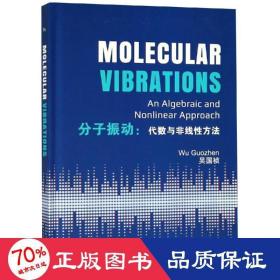
分子振动:代数与非线方法(英文版) 基础科学 吴国祯[
全新北京
¥ 67.05
-

分子振动:代数与非线方法(英文版) 基础科学 吴国祯[ 新华正版
全新保定
¥ 68.59
-

分子振动:代数与非线性方法(英文版)
全新广州
¥ 61.59
-
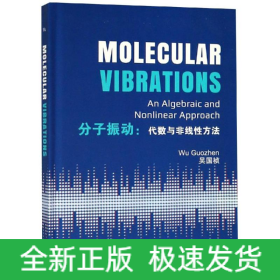
分子振动:代数与非线性方法(英文版)
全新广州
¥ 61.59
-

分子振动:代数与非线性方法(英文版)
全新广州
¥ 61.51
-
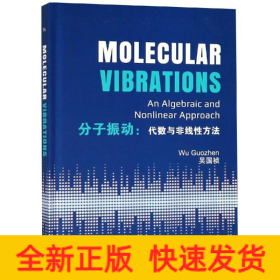
分子振动:代数与非线性方法(英文版)
全新广州
¥ 61.52
-

分子振动:代数与非线性方法(英文版)
全新广州
¥ 61.59
-

分子振动:代数与非线性方法(英文版)
全新成都
¥ 58.40
-
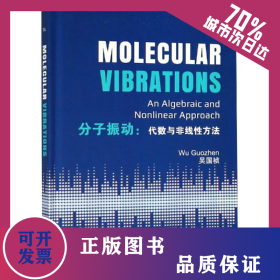
分子振动:代数与非线性方法(英文版)
全新天津
¥ 61.70
— 没有更多了 —







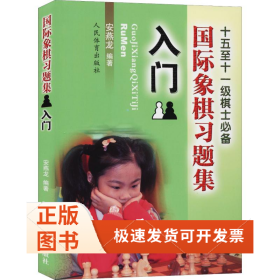




以下为对购买帮助不大的评价